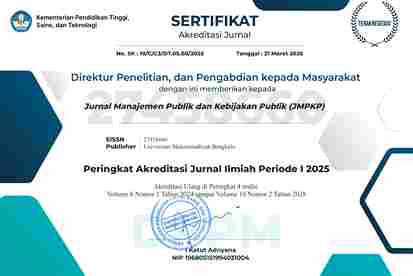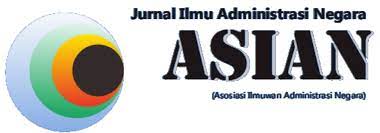Decision Making In Disaster Management Operations: Challenges and Opportunities
DOI:
https://doi.org/10.36085/jmpkp.v4i2.4687Keywords:
pengambilan keputusan; logistic; bencana; sentralistikAbstract
Objectives – Decision-making structures are usually associated with the logistical challenges experienced during disaster operations. However, the alignment between the operational level and the decision-making structure is usually neglected. The purpose of this paper is to provide an analysis of the suitability of the two levels and their impact on performance. Design/methodology/approach – This study uses a case study approach in Garut Regency. Through a review of disaster management policies in the region, interviews and secondary data, this paper provides an analysis of the current decision-making structure, logistics activities carried out by the authorities and the impact of alignment between the two components on logistics support performance. Findings – The analysis shows that some of the challenges commonly associated with centralization are actually rooted in alignment with the operational level. Logistics performance is negatively affected by faulty assumptions, poorly planned procedures, inconsistent decision making, and poorly designed structures. This case demonstrates the need to align the operational level with a centralized perspective to increase responsiveness, flexibility and interaction between different organizations. Originality/value – This paper identifies the impact of misalignment between decision-making structures and the operational level on logistics performance, an area that has not been studied at this time. Moving from current arguments about appropriate decision-making structures for disaster management to identification of components for implementing an efficient and effective disaster management system. In addition, this paper provides recommendations for best practices in humanitarian logistics, namely: applicable to Garut and other regions that use a centralized decision-making approach.
References
Balcik, B., Beamon, B.M., Krejci, C.C., Muramatsu, K.M. and Ramirez, M., 2010. Coordination in humanitarian relief chains: Practices, challenges and opportunities. International Journal of production economics, 126(1), pp.22-34.
Darmi, Titi., & Suwitri, Suwitri. (2017). Strengthening the Capacity of Human Resources Apparatus in the Implementation of New Autonomous Regions. European Journal of Social Sciences, 55(4), Pp. 427-438.
Holguín-Veras, J., Jaller, M., Van Wassenhove, L.N., Pérez, N. and Wachtendorf, T., 2012. On the unique features of post-disaster humanitarian logistics. Journal of Operations Management, 30(7-8), pp.494-506.
Kristian, I., Purwanto, B.H. and Azis, Y.M.A., 2021. Social Modality for Post Flood Disaster Cimanuk River in Garut Regency. Pasundan Social Science Development, 1(2), pp.95-101.
Pache, A.C. and Santos, F., 2010. When worlds collide: The internal dynamics of organizational responses to conflicting institutional demands. Academy of management review, 35(3), pp.455-476.
Pramono, R., 2016. Perspektif Sosiologis Dalam Penanggulangan Bencana Sociological Perspectives in Disaster Management. Jurnal Masyarakat dan Budaya, 18(1), pp.81-96.
Staw, B.M., Sandelands, L.E. and Dutton, J.E., 1981. Threat rigidity effects in organizational behavior: A multilevel analysis. Administrative science quarterly, pp.501-524
Thabet, R., Boufaied, A., Lamine, E., Korbaa, O. and Pingaud, H., 2018, June. Vers une méthode de gestion intégrée risques-processus pour la sécurisation du circuit du médicament. In MOSIM'18-12ème Conférence internationale de Modélisation, Optimisation et SIMulation (pp. 8-p).
Werneke, M.W., Susan Edmond, P.T., Michelle Young, P.T., Cred, M.D.T., David Grigsby, P.T., Cert, M.D.T., Brian McClenahan, P.T. and Troy McGill, P.T., 2018. Association between changes in function among patients with lumbar impairments classified according to the STarT Back Screening Tool and managed by McKenzie credentialed physiotherapists. Physiotherapy theory and practice.









